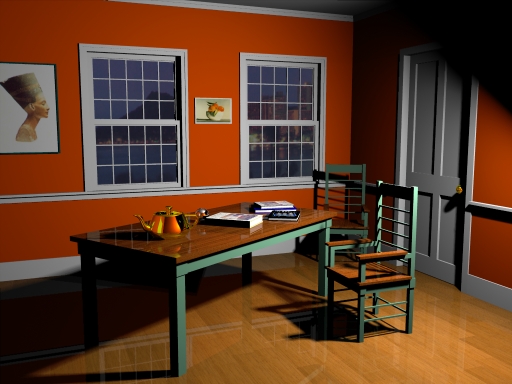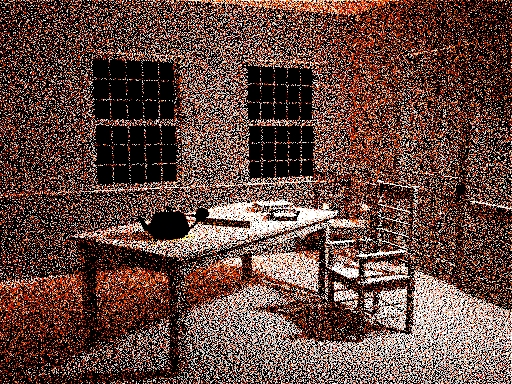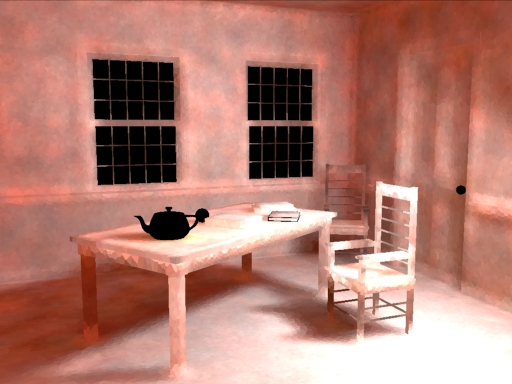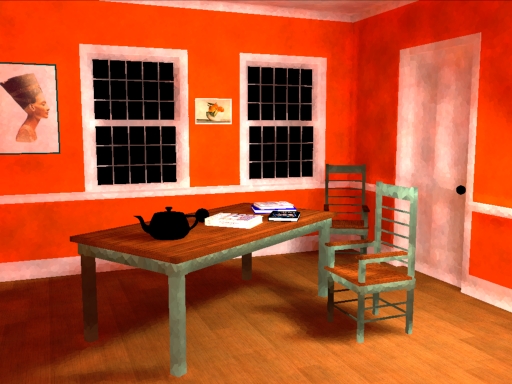
This is a HTML version of the slides from my presentation at the Dagstuhl seminar in June 2000. The presentation was an up-to-date version of my article "Faster photon map global illumination" in the Journal of Graphics Tools. Compared to that article, the render times have been significantly reduced, and I also talked about possible future improvements of the method.
Faster Photon Map Global Illumination
Per H. Christensen
Square USA, Honolulu, Hawaii
Abstract: The photon map method is an extension of ray tracing that enables it to efficiently compute caustics and soft indirect illumination on surfaces and in participating media. This presentation describes a method to further speed up the computation of soft indirect illumination on surfaces The speed-up is based on the observation that the many look-ups in the global photon map during final gathering can be simplified by (pre)computing local irradiance values at the photon positions. Our tests indicate that the calculation of soft indirect illumination can be sped up by a factor of 5-7 in typical scenes. The irradiance values can be computed before or during rendering. Other applications include participating media and importance at ``importon'' positions.
Outline
Advantages of the photon map method
The photon map method: overview
1) Photon Pass
(figure showing photon paths in a Cornell box and the photons stored in the global map)
2) Sort photons
3) Rendering
- caustic (SD): lookup in caustic photon map;
- soft indirect illumination (DD): final gathering (one level of distribution ray tracing), lookup in global photon map, Ward's irradiance gradients
Observations
Faster final gathering
Example
Example: classic ray tracing

Classic ray tracing: 12 min. (soft shadows, textures)
Example: photon map

500,000 photons. Tracing: 39 sec, sorting: 12 sec
Example: irradiance (1)
(figure omitted -- see the JGT article)
Irradiance estimates at image sample points (200 photons)
Example: irradiance (2)
(figure omitted -- see the JGT article)
Precomputed irradiance estimates at 500,000 photon positions. Precomputation: 5 min. (Voronoi diagram)
Example: irradiance (3)

Precomputed irradiance estimates at 125,000 photon positions. Precomputation: 1.2 min.
Example: radiance

Radiance estimates (this is what the final gather "sees")
Example: complete image

Complete image. Final gathering: 69 min -> 13 min. Total render time: 94 min -> 28 min.
Summary
Other applications
Ideas for future work
Faster precomputation (1)
Faster precomputation (2)
- currently: all or 1/4 (safe, but not optimal)
- needed most at high gradients
No precomputation
- avoids computing irradiance where not needed
- automatic importance "weight"
Conclusion
Back to Per's presentations page.